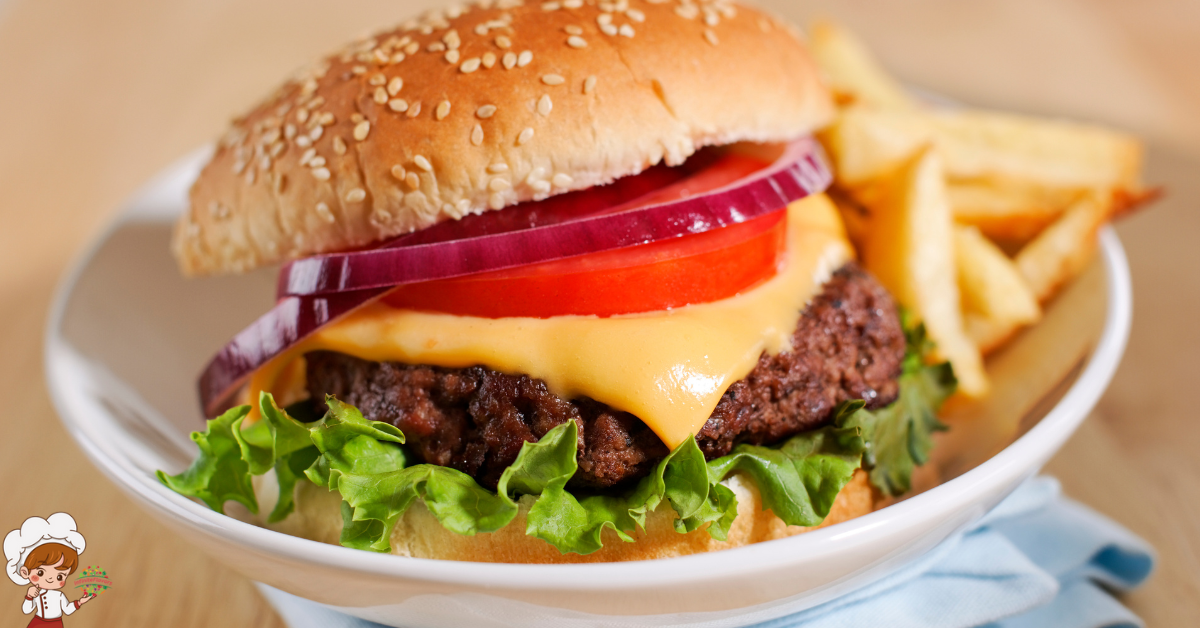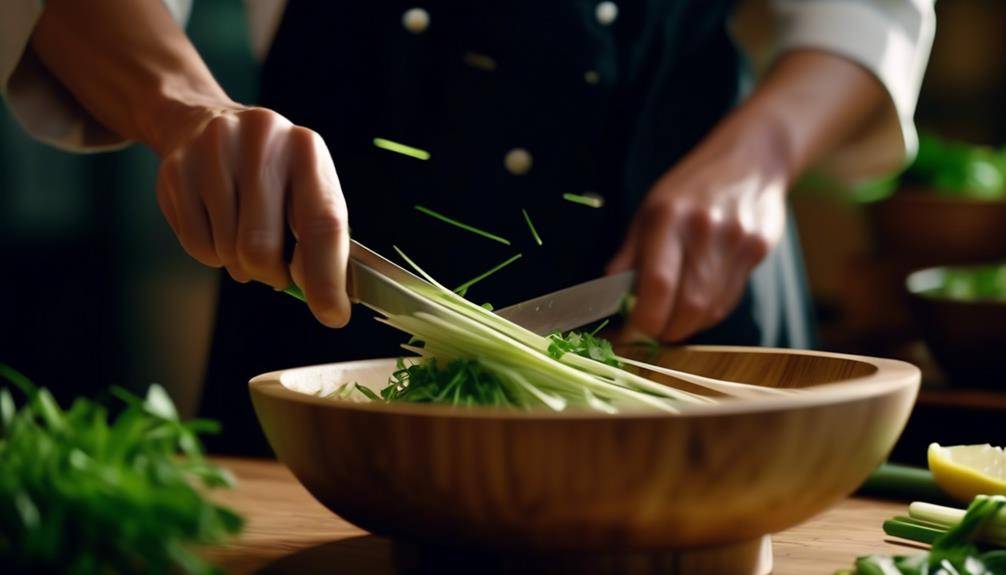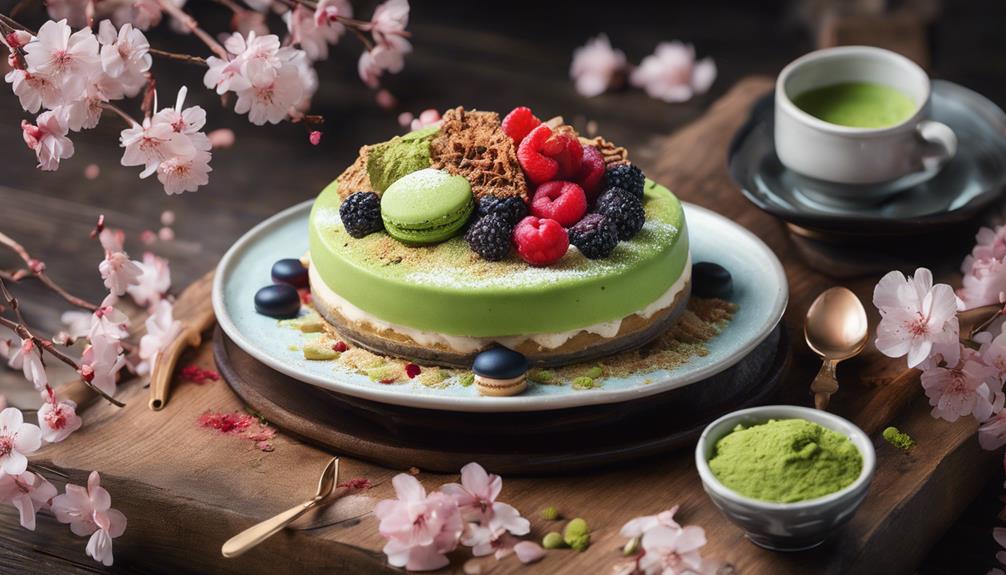Amazing Turkish Dishes With A Touch Of Modern Presentation

Turkish Dishes With A Touch Of Modern; Step into the world of Turkish cuisine, where traditional dishes are like a tapestry woven with rich flavors and vibrant colors. But what if you could experience these age-old delicacies in a whole new light? Imagine a culinary journey where classic Turkish recipes are reinvented with a touch of modern presentation. In this exploration of taste and aesthetics, you will discover how Turkish chefs are pushing the boundaries, embracing contemporary techniques, and creating dishes that are not only delicious but visually stunning. So, prepare to embark on a gastronomic adventure that will leave you craving for more.
The Evolution of Turkish Cuisine
Turkish cuisine has undergone a remarkable evolution, embracing both traditional flavors and modern culinary techniques to create a truly unique dining experience. One aspect of this evolution is the transformation of Turkish spices. Traditionally, Turkish cuisine relied heavily on a few key spices such as cumin, coriander, and paprika. However, with the influence of other cultures and the introduction of new ingredients, the range of spices used in Turkish cooking has expanded significantly. Today, you can find Turkish dishes infused with spices like sumac, saffron, and cardamom, adding depth and complexity to the flavors.
Another significant aspect of the evolution of Turkish cuisine is the incorporation of modern cooking techniques. While traditional methods like grilling, stewing, and baking are still widely used, modern techniques such as sous vide, molecular gastronomy, and fusion cooking have found their place in Turkish kitchens. These techniques allow Turkish chefs to experiment with different flavors, textures, and presentations, resulting in innovative and visually stunning dishes.
The use of modern techniques in Turkish cooking has not only brought about changes in the way dishes are prepared but also in the way they are presented. Traditional Turkish dishes are known for their vibrant colors, bold flavors, and generous portions. However, with the influence of modern plating techniques, Turkish chefs are now creating dishes that are not only delicious but also visually appealing. The presentation of Turkish dishes has become more refined and artistic, with attention to detail and a focus on creating a memorable dining experience.
Exploring Contemporary Turkish Flavors
Embracing a fusion of traditional ingredients and contemporary culinary trends, the flavors of modern Turkish cuisine captivate the senses with their intricate balance of aromas, textures, and tastes. Exploring contemporary Turkish flavors involves delving into the innovative techniques and methods used to modernize traditional dishes. Here are some exciting ways in which Turkish cuisine has been given a fresh twist:
- Deconstructed Mezze: Traditional mezze platters are transformed into visually stunning, bite-sized morsels. Chefs skillfully deconstruct classic dishes like hummus and baba ganoush, presenting them in unique and artistic ways. Each component is carefully arranged to create a harmonious balance of flavors that surprises and delights the palate.
- Sous Vide Kebabs: The traditional method of grilling kebabs is revolutionized with the use of sous vide cooking. Marinated meats are vacuum-sealed and cooked at a precise temperature for an extended period, resulting in tender and juicy kebabs. This modern technique allows for the flavors to penetrate the meat thoroughly, creating a depth of taste that is unmatched.
- Molecular Gastronomy: Turkish cuisine embraces the use of molecular gastronomy techniques to create stunning and unexpected presentations. By manipulating the physical and chemical properties of ingredients, chefs are able to create innovative dishes that challenge traditional notions of taste and texture. Foams, gels, and spheres are used to add a touch of whimsy to familiar Turkish flavors.
- Fusion Desserts: Traditional Turkish desserts are given a contemporary twist by incorporating elements from other cuisines. Chefs experiment with flavor combinations, introducing ingredients like matcha, lavender, or passion fruit into traditional sweets. The result is a delightful fusion of flavors that pays homage to tradition while embracing the spirit of innovation.
Exploring contemporary Turkish flavors is a journey of culinary discovery, where traditional dishes are modernized through innovative techniques. With their intricate balance of aromas, textures, and tastes, these dishes captivate the senses and leave a lasting impression.
Fusion of Traditional and Modern Cooking Techniques
How can traditional Turkish cooking techniques be fused with modern methods to create innovative and exciting dishes? The fusion of traditional and modern cooking techniques has led to the evolution of fusion cuisine, where old and new flavors come together in a harmonious blend. In the context of Turkish cuisine, this fusion is a delicate balance between honoring age-old traditions and embracing contemporary cooking practices.
One way modern techniques are incorporated into traditional Turkish cooking is through the use of innovative presentation styles. Chefs are now experimenting with different plating techniques, creating visually stunning dishes that showcase the beauty of Turkish cuisine. For example, traditional kebabs are given a modern twist by arranging the meat and vegetables in an artistic manner, using geometric shapes and bold colors. This not only enhances the visual appeal of the dish but also elevates the dining experience.
Another way traditional and modern techniques merge is through the introduction of new cooking methods. For instance, traditional dishes like pilaf or stuffed vegetables are now prepared using sous vide, a modern cooking technique that ensures precise cooking temperatures and retains the natural flavors of the ingredients. This allows for a more refined taste and texture, while still preserving the essence of the original dish.
Additionally, modern techniques such as molecular gastronomy are being incorporated into Turkish cuisine, giving rise to innovative dishes that push the boundaries of traditional flavors. Chefs are using techniques like spherification or foams to create unique textures and presentations, adding a touch of whimsy to traditional Turkish dishes.
Artistic Plating: Elevating Turkish Dishes
By experimenting with innovative presentation styles, chefs are able to elevate traditional Turkish dishes and create visually stunning culinary experiences. Through the use of artistic plating and modern presentation techniques, these chefs are able to transform simple dishes into visually appealing works of art that leave a lasting impression on diners.
Imagine sitting down at a restaurant and being presented with a plate that looks more like a masterpiece than a meal. This is the power of artistic plating. Chefs use their creativity and attention to detail to arrange the components of a dish in a visually pleasing way. From carefully placing ingredients to adding garnishes and sauces, every element on the plate is strategically arranged to create a visually stunning presentation.
Here are four ways in which chefs are using artistic plating to elevate Turkish dishes:
- Geometric designs: Chefs are incorporating geometric shapes and patterns into their plating, adding a modern and artistic touch to traditional dishes. By arranging ingredients in precise shapes or creating intricate patterns with sauces, they are able to create visually striking plates that are as pleasing to the eye as they are to the palate.
- Contrasting colors: By using a combination of vibrant and contrasting colors, chefs are able to make their dishes visually captivating. The use of colorful vegetables, fruits, and sauces not only adds visual appeal but also enhances the overall flavor profile of the dish.
- Layering and stacking: Chefs are experimenting with different techniques to create height and depth in their dishes. By layering ingredients or stacking them in unique ways, they are able to create visually dynamic plates that are visually appealing.
- Edible flowers and microgreens: Adding edible flowers and microgreens to dishes not only adds a pop of color but also adds a delicate and fresh element to the plate. This not only enhances the visual appeal but also adds another layer of flavor and texture to the dish.
Through artistic plating and modern presentation techniques, chefs are able to take traditional Turkish dishes to new heights. By paying attention to every detail and using their creativity, they are able to create visually stunning culinary experiences that are sure to leave a lasting impression.
Reinventing Classic Turkish Recipes
Are classic Turkish recipes being reinvented to meet the demands of modern culinary trends? Absolutely! Chefs all over Turkey are reimagining traditional flavors and putting modern twists on Turkish classics to cater to the evolving tastes of today’s diners. With a desire to offer something unique and exciting, these innovative chefs have taken the rich culinary heritage of Turkey and transformed it into a contemporary dining experience.
One example of reinventing classic Turkish recipes is the use of molecular gastronomy techniques to create visually stunning dishes. Chefs are using ingredients like liquid nitrogen and edible foams to add a touch of science to traditional recipes. For instance, they might create a foam made from yogurt to top a classic lamb kebab, adding a burst of tangy flavor and a modern aesthetic.
Another way classic Turkish recipes are being reinvented is through fusion cuisine. Chefs are blending Turkish flavors with ingredients and techniques from other cuisines, creating unexpected and delightful combinations. For example, they might incorporate Japanese influences by adding a miso glaze to grilled fish, or they might infuse Italian flavors by using a tomato-based sauce in a traditional Turkish stew.
In addition to these creative approaches, chefs are also experimenting with presentation. They are using artistic plating techniques to elevate the visual appeal of traditional Turkish dishes. By arranging ingredients in unique ways and adding decorative elements, they are turning simple dishes into works of art.
Innovative Ingredients in Turkish Cuisine
When it comes to innovative ingredients in Turkish cuisine, you’ll discover a whole array of unique flavors and combinations that will surprise your taste buds. Traditional dishes are being given modern twists, with chefs incorporating unexpected ingredients to create exciting new flavors and textures. The fusion of flavors from different cuisines adds a contemporary touch to Turkish dishes, making them even more enticing and memorable.
Unique Turkish Ingredients
Turkish cuisine boasts an array of innovative ingredients that have been incorporated into its traditional dishes, resulting in a unique and flavorful culinary experience. From exploring indigenous spices to creating modern interpretations of traditional dishes, Turkish chefs have mastered the art of blending old and new flavors. Here are four unique Turkish ingredients that are worth discovering:
- Pomegranate Molasses: This tangy and syrupy ingredient adds a burst of flavor to salads, marinades, and stews.
- Sumac: Known for its vibrant red color, sumac brings a tangy and lemony taste to dishes, making it a popular seasoning for grilled meats and salads.
- Urfa Biber: This smoky and slightly sweet chili pepper is used to add depth and complexity to dishes, especially meat-based recipes.
- Mahlep: Made from ground cherry pits, mahlep lends a unique floral and nutty flavor to baked goods and desserts.
Modern Twists on Classics
With the foundation of unique Turkish ingredients established, it’s time to explore the modern twists on classic dishes that have emerged from the innovative culinary landscape of Turkish cuisine. Turkish chefs have been pushing the boundaries of traditional recipes, creating modern interpretations that incorporate innovative twists. One example is the iconic dish, Turkish kebabs, which have undergone a transformation with the introduction of new ingredients and presentation techniques.
Chefs are experimenting with marinating the meat in unique spice blends and grilling it to perfection. They are also incorporating unexpected flavors such as pomegranate molasses or sumac into the marinade. Another classic dish that has received a modern makeover is the Turkish dolma. Traditionally, dolma is made by stuffing vegetables with rice and meat. However, chefs are now using creative fillings like quinoa and lentils, offering a healthier and vegetarian-friendly option. These modern interpretations not only showcase the innovative spirit of Turkish cuisine but also provide a delightful twist to beloved classics.
Fusion of Flavors
In the realm of Turkish cuisine, a fusion of flavors has emerged, bringing together innovative ingredients to create a culinary experience like no other. The evolution of fusion in Turkish cuisine has taken traditional dishes and given them a modern twist on flavors. Here are some examples of how innovative ingredients are being incorporated into Turkish dishes:
- Pomegranate molasses adds a tangy sweetness to savory dishes like lamb kebabs, giving them a unique and vibrant flavor.
- Sumac, a tart and lemony spice, is sprinkled over dishes like grilled vegetables and salads, adding a refreshing and citrusy kick.
- Dried apricots are being used as a natural sweetener in savory dishes, balancing out the flavors and adding a subtle fruity note.
- Pistachios, a beloved ingredient in Turkish cuisine, are being used in unexpected ways, such as in baklava ice cream, providing a delightful crunch and nutty flavor.
Turkish Street Food With a Modern Twist
Get ready to experience the vibrant flavors and innovative twists of Turkey’s street food scene. Turkish street food has long been known for its delicious and indulgent flavors, but in recent years, there has been a surge in innovative presentation techniques that have taken the street food experience to a whole new level.
One example of this modern twist on Turkish street food is the famous “döner kebab” being served in a unique and creative way. Instead of the traditional pita bread wrapped around the succulent meat and toppings, it is now being presented as a deconstructed dish. The tender slices of meat are neatly arranged on a plate with a variety of colorful and fresh vegetables, drizzled with flavorful sauces. This new presentation not only adds visual appeal but also allows the flavors to shine individually.
Another popular street food dish that has undergone a modern transformation is “simit,” the iconic Turkish sesame bread. While traditionally served as a simple round bread, it is now being reinvented as bite-sized sliders. The simit is cut into smaller pieces and filled with a variety of fillings such as cheese, olives, and tomatoes. This innovative twist not only makes it easier to eat on the go but also adds a new dimension of flavors.
Additionally, traditional street food items like “börek” and “lahmacun” are being presented in more visually appealing ways. Börek, a savory pastry filled with cheese or meat, is now being served in bite-sized portions, allowing for a more elegant and refined eating experience. Lahmacun, a thin and crispy Turkish pizza, is being topped with a variety of gourmet ingredients, elevating its taste and presentation.
The Influence of Global Culinary Trends on Turkish Cuisine
As Turkish street food continues to evolve with innovative presentation techniques, it is undeniable that global culinary trends have played a significant role in shaping the modernization of Turkish cuisine. Traditional Turkish dishes have been influenced by international flavors and cooking styles, resulting in a fusion of old and new that has captivated both locals and tourists alike. Here are four ways in which global culinary trends have influenced traditional Turkish dishes and contributed to the modernization of Turkish culinary traditions:
- Ingredient Diversity: The incorporation of ingredients from different cuisines has added a new dimension to Turkish dishes. For example, dishes like köfte (meatballs) now feature unique spices and herbs inspired by Middle Eastern and Mediterranean cuisines.
- Innovative Techniques: Global culinary trends have introduced new cooking techniques that have transformed traditional Turkish dishes. Chefs are now experimenting with sous vide, molecular gastronomy, and other modern cooking methods to create unique and visually stunning presentations.
- Artistic Presentation: The rise of social media and food blogging has placed a greater emphasis on the visual aspect of food. Turkish chefs have embraced this trend by presenting traditional dishes in a more artistic and visually appealing manner, using techniques such as edible flowers, intricate plating, and vibrant colors.
- Fusion Flavors: The blending of Turkish flavors with international cuisines has resulted in exciting fusion dishes. For example, Turkish tacos filled with traditional Turkish kebabs and served with Mexican-inspired salsas have become popular street food items.
These influences on traditional Turkish dishes have contributed to the modernization of Turkish culinary traditions, preserving the essence of the cuisine while embracing global trends. As a result, Turkish cuisine continues to evolve and captivate food enthusiasts around the world.
Modern Presentation Techniques in Turkish Desserts
When it comes to Turkish desserts, modern presentation techniques have revolutionized the way these sweet treats are served. Unique plating techniques are used to create visually stunning desserts that are as beautiful as they are delicious. Playful dessert presentations, such as deconstructed dishes or interactive elements, add an element of surprise and excitement to the dining experience. The fusion of traditional and modern elements in Turkish desserts showcases the creativity and innovation of chefs who are pushing the boundaries of dessert presentation.
Unique Plating Techniques
To create a modern and visually stunning presentation for Turkish desserts, chefs employ unique plating techniques that elevate the dining experience. These innovative plating styles and creative presentation techniques not only enhance the visual appeal of the desserts but also add an element of surprise and excitement to the overall dining experience. Here are some examples of these unique plating techniques:
- Deconstructed desserts: Chefs deconstruct traditional Turkish desserts and present them in a modern and artistic manner, showcasing each component separately on the plate.
- Geometric shapes: Desserts are carefully arranged in geometric patterns, adding a sense of precision and elegance to the presentation.
- Playful textures: Chefs experiment with different textures, such as crunchy, smooth, and creamy, to create visually appealing contrasts on the plate.
- Edible flowers and garnishes: Colorful edible flowers and delicate garnishes are used to add a pop of color and a touch of nature to the dessert presentation.
These unique plating techniques not only showcase the creativity and skill of the chefs but also enhance the overall dining experience, making Turkish desserts an unforgettable treat for the eyes and the taste buds.
Playful Dessert Presentation
Chefs in Turkish cuisine showcase their creativity and skill through playful dessert presentation techniques, elevating the dining experience with visually stunning and innovative plating styles. When it comes to Turkish desserts, the presentation is just as important as the taste. Chefs often use innovative plating techniques to create a whimsical and playful dessert experience.
For example, they may incorporate elements of surprise, such as hiding small treats inside a dessert or using unconventional serving vessels like mini flower pots or glass domes. These playful presentations not only add a touch of fun to the dining experience but also engage the senses and create a lasting impression. From vibrant fruit arrangements to intricate chocolate decorations, Turkish chefs are constantly pushing the boundaries of dessert presentation, turning simple sweets into works of art.
Fusion of Traditional and Modern
Turkish chefs demonstrate their culinary ingenuity by seamlessly blending traditional and modern presentation techniques in their exquisite desserts. By combining evolutionary techniques with traditional flavors, they create desserts that not only satisfy the palate but also delight the eyes. Here are some examples of the fusion of traditional and modern in Turkish dessert presentation:
- Turkish Delight with a Twist: Classic Turkish delight is transformed into bite-sized cubes adorned with edible gold leaf, giving it a luxurious and contemporary touch.
- Revamped Baklava: The classic layers of flaky pastry and sweet honey are elevated with the addition of innovative toppings such as pistachio dust, rose petals, or a drizzle of dark chocolate sauce.
- Deconstructed Turkish Coffee: This traditional beverage is reimagined as a dessert, with the flavors of coffee, cardamom, and caramelized sugar presented in a modern and artistic manner.
- Modernized Künefe: This traditional cheese-based dessert is given a modern twist by incorporating unexpected elements like fresh berries or a sprinkle of crushed pistachios.
Through their mastery of both traditional and modern techniques, Turkish chefs create desserts that are not only delicious but also visually stunning, offering a truly unique dining experience.
Contemporary Turkish Meze: Small Plates With Big Flavor
With an innovative twist on traditional Turkish cuisine, contemporary Turkish meze offers a captivating culinary experience that tantalizes the taste buds. These small plates with big flavor showcase a fusion of contemporary presentation and innovative flavors, creating a delightful dining experience.
Contemporary Turkish meze takes traditional Turkish appetizers and elevates them to a whole new level. The presentation of these dishes is a feast for the eyes, with vibrant colors and artistic arrangements that showcase the creativity of the chef. Each plate is meticulously crafted, with attention given to every detail, making it not only a pleasure to eat but also a visual delight.
But it’s not just the presentation that sets contemporary Turkish meze apart. The flavors are equally remarkable. Chefs take traditional ingredients and techniques and infuse them with modern twists, resulting in dishes that are both familiar and excitingly new. From grilled halloumi with pomegranate molasses to smoked eggplant puree with tahini and crispy chickpeas, each bite is a burst of flavors that dance on your palate.
What makes contemporary Turkish meze truly special is the emphasis on fresh, local ingredients. Chefs source the best produce, meats, and seafood, and use them to create dishes that highlight the natural flavors of the ingredients. This emphasis on quality and seasonality ensures that every dish is a celebration of Turkish cuisine at its finest.
Turkish Fine Dining: A Modern Culinary Experience
As you continue your culinary exploration of Turkish cuisine, prepare to be enchanted by the world of Turkish fine dining, where a modern twist on traditional dishes takes center stage. Turkish fine dining offers a unique and innovative culinary experience that combines the rich flavors of Turkish cuisine with modern culinary techniques.
Here are four reasons why Turkish fine dining is a must-try experience:
- Creativity: Turkish chefs are known for their creativity in combining traditional flavors with modern cooking techniques. They push the boundaries of Turkish cuisine, incorporating new ingredients and innovative presentation styles to create visually stunning and delicious dishes.
- Elevated Presentation: In Turkish fine dining, presentation is just as important as taste. Chefs meticulously arrange each dish to create a visually appealing masterpiece on the plate. The use of vibrant colors, artistic garnishes, and elegant plating techniques adds an extra touch of sophistication to the dining experience.
- Fusion of Flavors: Turkish fine dining is a harmonious fusion of flavors from different regions of Turkey. Chefs experiment with diverse ingredients and cooking techniques, resulting in a unique blend of traditional flavors and modern influences. Each bite is a journey through the diverse culinary landscape of Turkey.
- Exquisite Ingredients: Turkish fine dining emphasizes the use of high-quality, local ingredients. Chefs source the freshest produce, finest cuts of meat, and delicate herbs and spices to create dishes that are bursting with flavor. The focus on quality ingredients ensures that each dish is a true celebration of Turkish cuisine.
Frequently Asked Questions: Turkish Dishes With A Touch Of Modern
What Are the Traditional Ingredients Used in Turkish Cuisine?
In Turkish cuisine, traditional ingredients play a vital role. From savory spices like cumin and sumac to staples like lamb and yogurt, these elements create the rich and diverse flavors that define Turkish dishes.
How Has Turkish Street Food Evolved Over the Years?
Over the years, Turkish street food has evolved, incorporating modern twists into traditional dishes. The evolution of street food has brought about innovative presentations, making Turkish cuisine more exciting and appealing to a wider audience.
What Are Some Unique Presentation Techniques Used in Turkish Desserts?
When it comes to Turkish desserts, modern plating techniques and artistic garnishes are used to create unique presentations. These techniques elevate the visual appeal of the desserts, making them a feast for both the eyes and taste buds.
Which Global Culinary Trends Have Influenced Turkish Cuisine the Most?
Global fusion and fusion techniques have greatly influenced Turkish cuisine, bringing a modern touch to traditional dishes. These culinary trends have allowed for innovative presentations, creating a unique dining experience that combines the best of both worlds.
How Has Fine Dining in Turkey Embraced Modern Culinary Techniques?
Fine dining in Turkey has embraced modern culinary techniques through the incorporation of innovative cooking methods and presentation styles. Turkish fusion cuisine combines traditional flavors with contemporary elements, resulting in dishes that are visually stunning and gastronomically delightful.
Conclusion
In conclusion, the modern presentation of Turkish dishes has brought a new level of creativity and sophistication to the country’s cuisine. With the fusion of traditional and modern cooking techniques, along with the influence of global culinary trends, Turkish cuisine has evolved to offer a contemporary and artistic dining experience. From reinvented classic recipes to innovative dessert presentations, Turkish cuisine continues to impress with its bold flavors and visually stunning dishes. Dining in Turkey has truly become a modern culinary experience.








